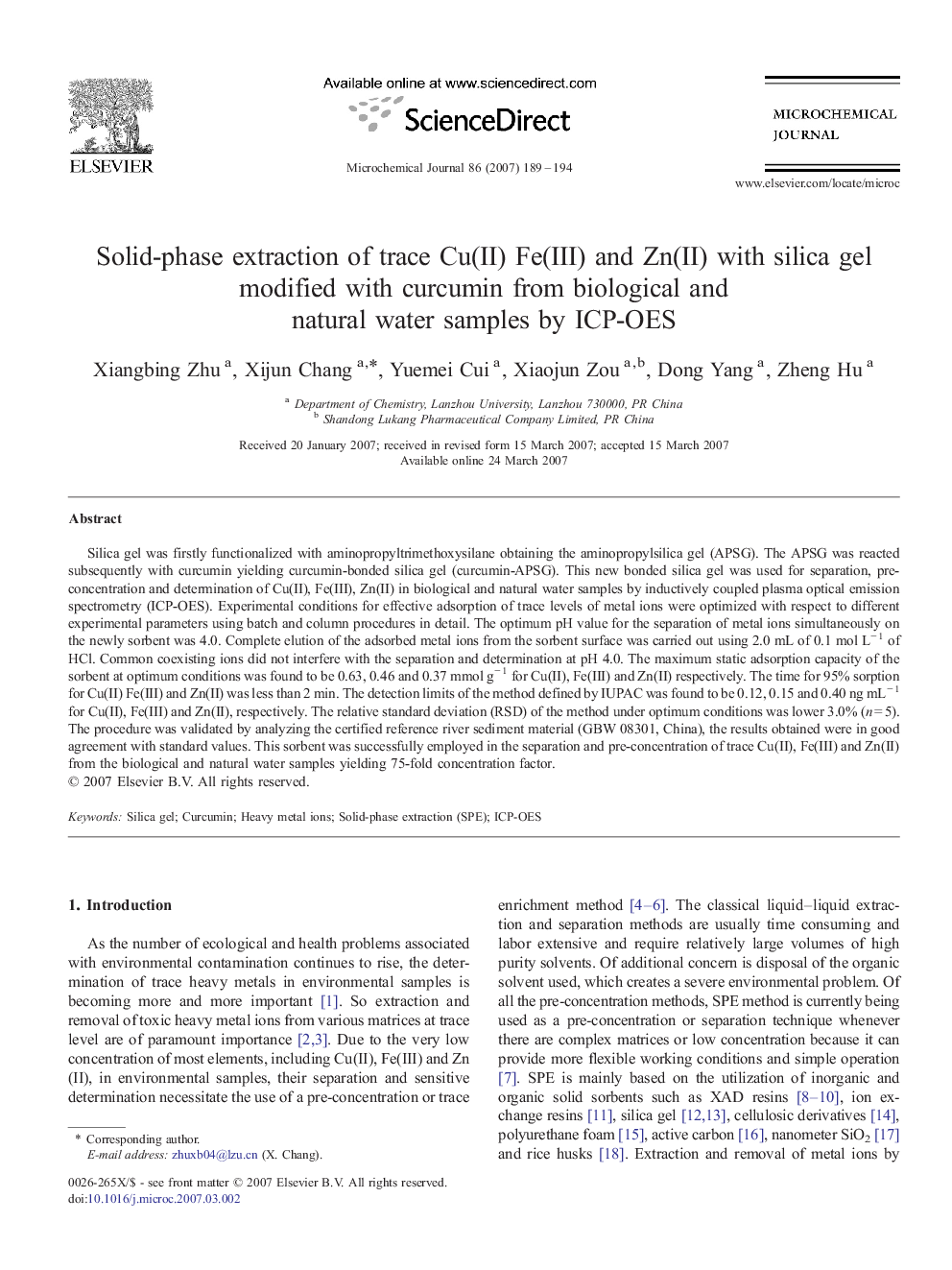| Article ID | Journal | Published Year | Pages | File Type |
|---|---|---|---|---|
| 1228361 | Microchemical Journal | 2007 | 6 Pages |
Silica gel was firstly functionalized with aminopropyltrimethoxysilane obtaining the aminopropylsilica gel (APSG). The APSG was reacted subsequently with curcumin yielding curcumin-bonded silica gel (curcumin-APSG). This new bonded silica gel was used for separation, pre-concentration and determination of Cu(II), Fe(III), Zn(II) in biological and natural water samples by inductively coupled plasma optical emission spectrometry (ICP-OES). Experimental conditions for effective adsorption of trace levels of metal ions were optimized with respect to different experimental parameters using batch and column procedures in detail. The optimum pH value for the separation of metal ions simultaneously on the newly sorbent was 4.0. Complete elution of the adsorbed metal ions from the sorbent surface was carried out using 2.0 mL of 0.1 mol L− 1 of HCl. Common coexisting ions did not interfere with the separation and determination at pH 4.0. The maximum static adsorption capacity of the sorbent at optimum conditions was found to be 0.63, 0.46 and 0.37 mmol g− 1 for Cu(II), Fe(III) and Zn(II) respectively. The time for 95% sorption for Cu(II) Fe(III) and Zn(II) was less than 2 min. The detection limits of the method defined by IUPAC was found to be 0.12, 0.15 and 0.40 ng mL− 1 for Cu(II), Fe(III) and Zn(II), respectively. The relative standard deviation (RSD) of the method under optimum conditions was lower 3.0% (n = 5). The procedure was validated by analyzing the certified reference river sediment material (GBW 08301, China), the results obtained were in good agreement with standard values. This sorbent was successfully employed in the separation and pre-concentration of trace Cu(II), Fe(III) and Zn(II) from the biological and natural water samples yielding 75-fold concentration factor.
